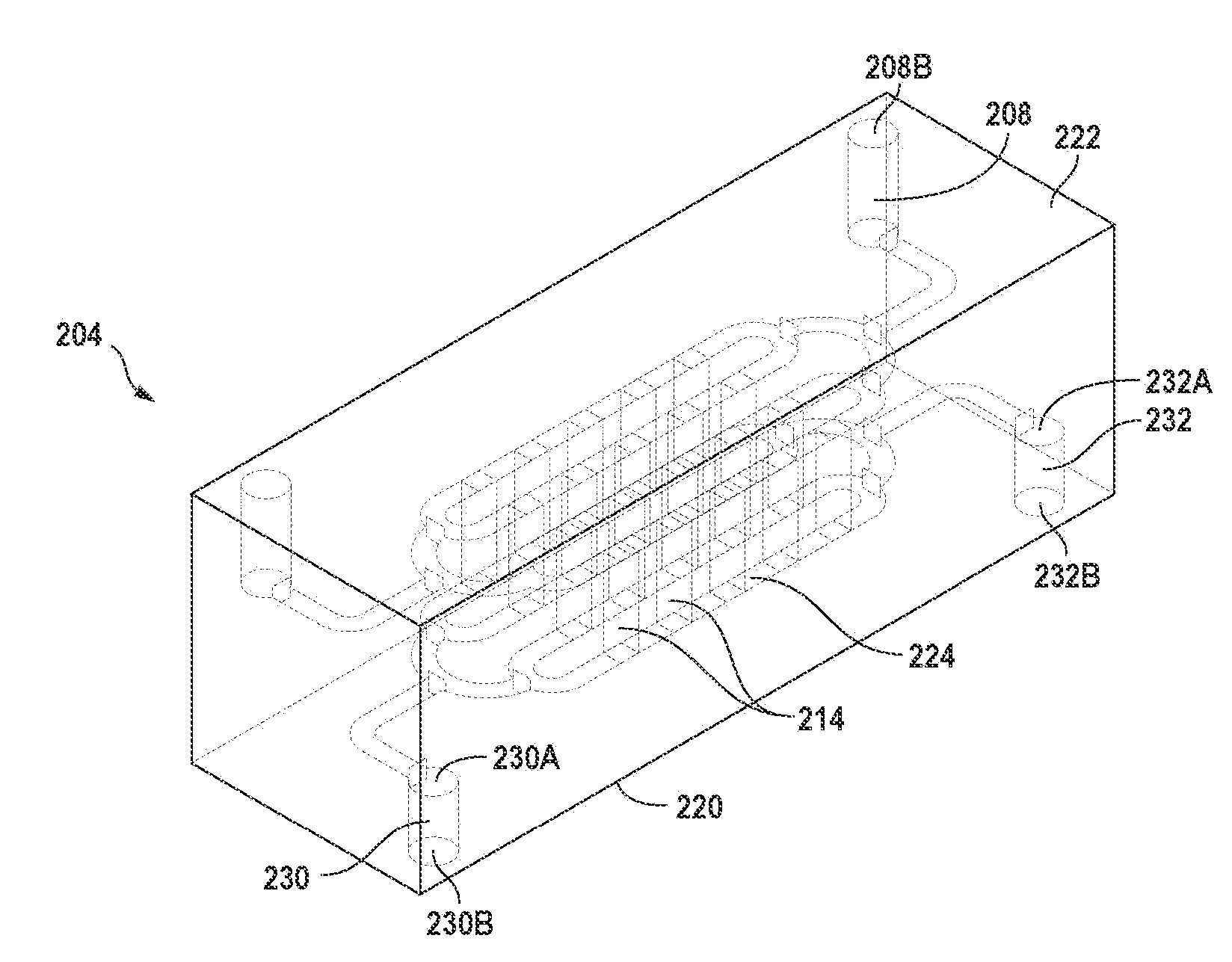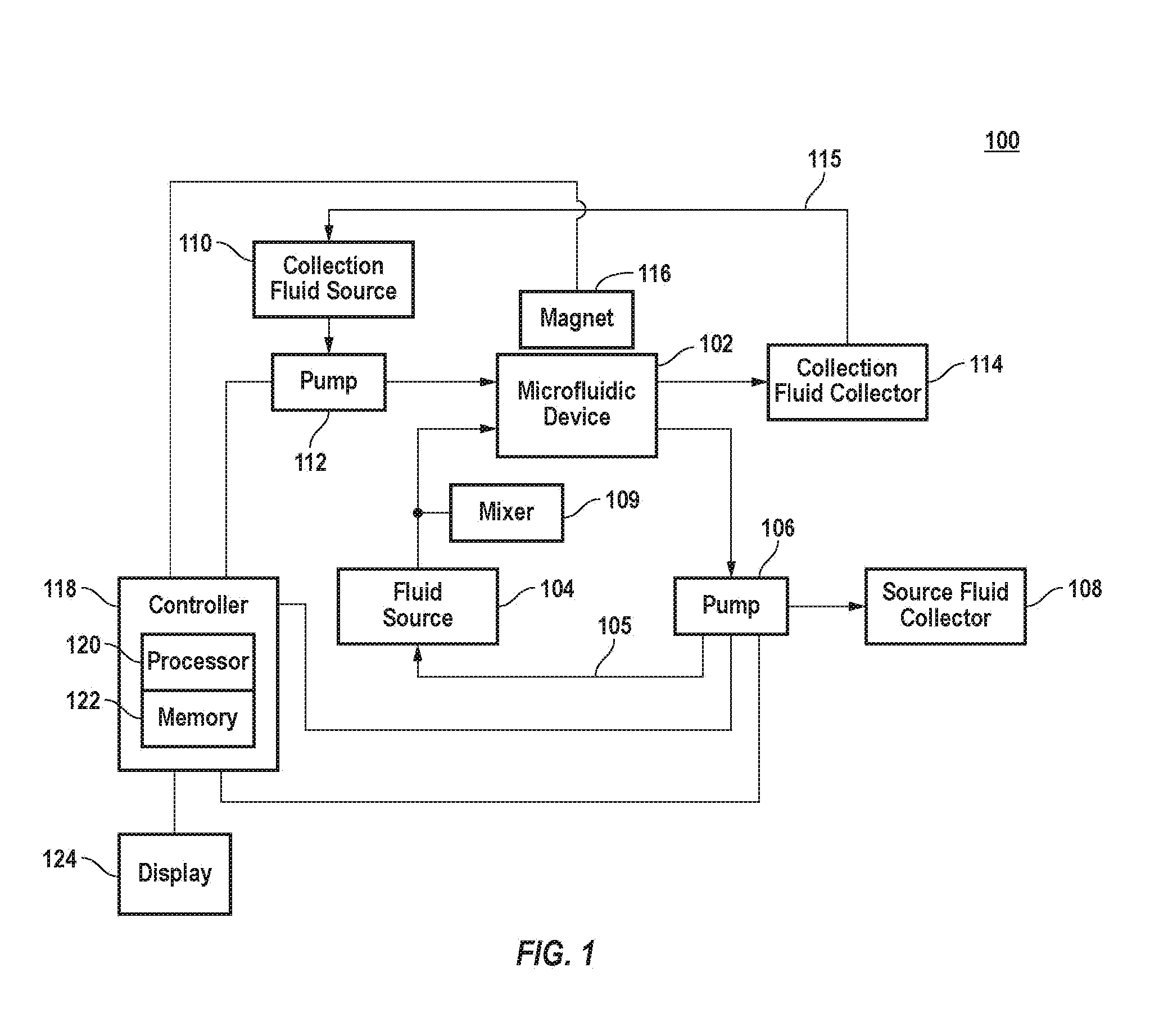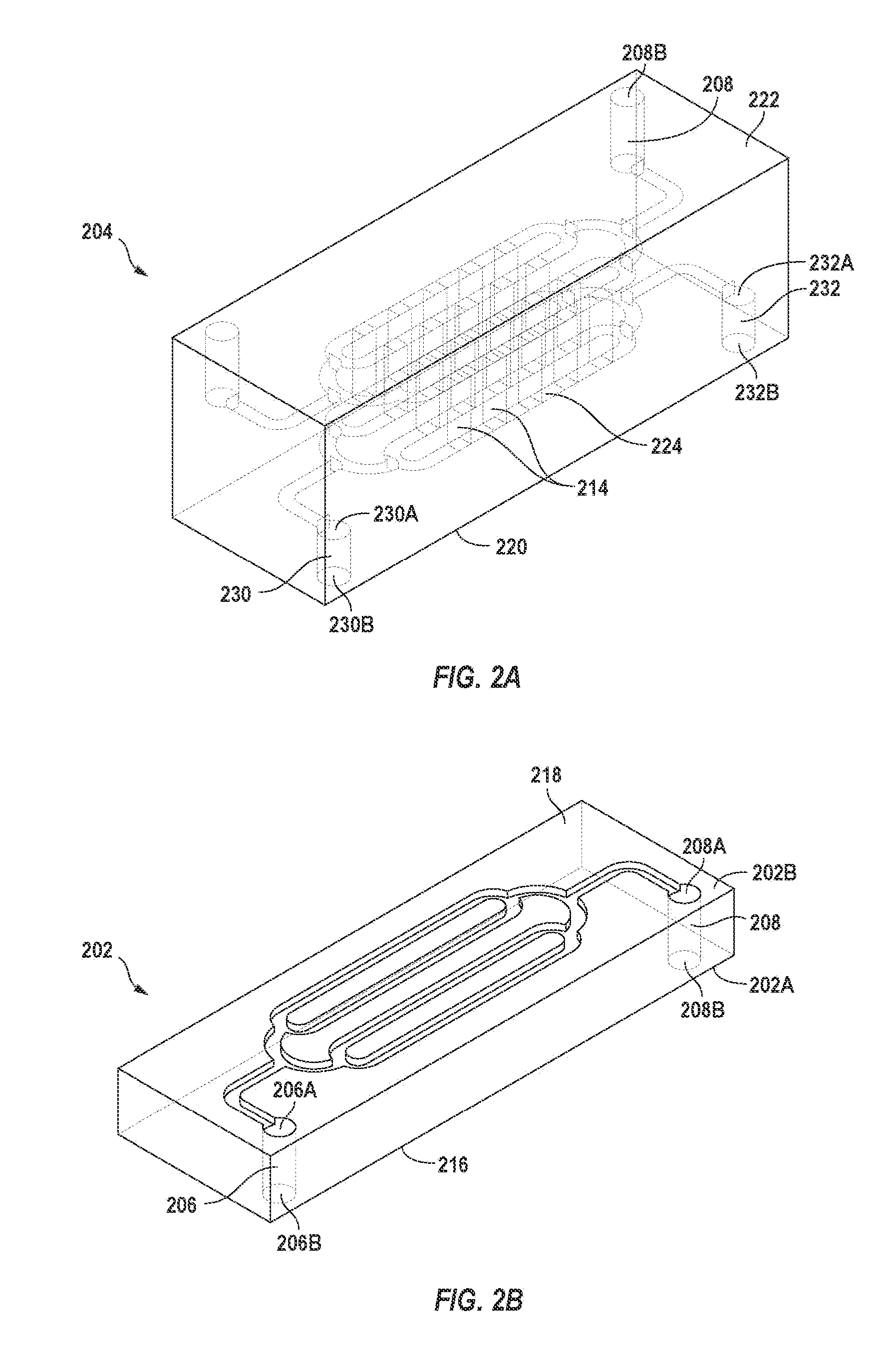Device for Filtration of Fluids Therethrough and Accompanying Method
a technology of fluid filtration and fluid filtration, which is applied in the field of fluid filtration devices, can solve the problems of limited throughput, limited usefulness of in-line systems, and compounded problems, and achieve the effect of facilitating the separation and removal of target components
- Summary
- Abstract
- Description
- Claims
- Application Information
AI Technical Summary
Benefits of technology
Problems solved by technology
Method used
Image
Examples
examples
[0180]In a prototype system, six NiFeB magnets (6 mm×2 mm×2 cm; w×h×l) were stacked 2×3 with alternating magnetic field directions, such that the overall dimensions were (18 mm×4 mm×2 cm; w×h×l), before placing them adjacent to the microfluidic device. Alternatively, one NiFeB magnet or an electromagnet with appropriate field concentrator that can cover all the throughholes and exert the sufficient magnetic pulling forces (field gradient) could have been used. In the case of using permanent magnets, it was critical that the widest face of the magnets was facing the channels below because this face (18 mm×2 cm; w×l) has the highest magnetic flux and thus pulling strength. Using a six-magnet configuration, the magnetic field strength was approximately 50 mT-100 mT at a distance of 3 mm-5 mm, which was at the distance of the flowing fluid (blood) layer. The third layer of PDMS had the same network of channels facing down, but was connected to the blood fluid channels only by the transf...
PUM
| Property | Measurement | Unit |
|---|---|---|
| size | aaaaa | aaaaa |
| angle | aaaaa | aaaaa |
| depth | aaaaa | aaaaa |
Abstract
Description
Claims
Application Information
 Login to View More
Login to View More - R&D
- Intellectual Property
- Life Sciences
- Materials
- Tech Scout
- Unparalleled Data Quality
- Higher Quality Content
- 60% Fewer Hallucinations
Browse by: Latest US Patents, China's latest patents, Technical Efficacy Thesaurus, Application Domain, Technology Topic, Popular Technical Reports.
© 2025 PatSnap. All rights reserved.Legal|Privacy policy|Modern Slavery Act Transparency Statement|Sitemap|About US| Contact US: help@patsnap.com



